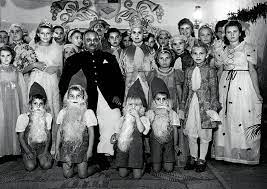During the second World War, there were hundreds of displaced Polish children who were brought to Soviet orphanages. This happened during the time Germany invaded Poland in 1939.
In 1942 Digvijaysinhji Ranjitsinhji Jadeja the Maharaja of Nawanager established the Polish Children’s Camp for the refugee children of Poland to save them from the harsh conditions of the USSR orphanages during World War II.
Who is Digvijaysinhji Ranjitsinhji Jadeja?
Digvijaysinhji Ranjitsinhji Jadeja, a Rajput of the Yaduvanshi clan was board on September 18, 1895. He is the nephew of the famous cricketer K.S. Ranjitsinhji. (Source: The London Gazette)
He joined the British Army in 1919. By 1920, he served with the Egyptian Expeditionary Force and was promoted to lieutenant by 1921. (Source: The London Gazette)
Digvijaysinhji was the successor of his uncle Ranjitsinhji. He ruled as the Maharaja Jam Sahib of Nawanager in 1933 till his death.
How Did the Orphans End Up in His Care?
In the year 1941, an amnesty allowed the orphans to leave the Soviet Union. Some were moved to Mexico, New Zealand and other countries. India, was the first state to offer them a place to go to. (Source: Culture)
Maharaja Jam Saheb Digvijaysinhji Ranjitsinhji, the ruler of Nawanagar volunteered to provide a home for the hundreds of displaced orphans. The children were transported to India immediately by members of the Anders’ Army, the Red Cross, the Polish consulate in Bombay, and British officials. (Source: Culture)
The first batch of orphans were transported in 1942. There were only 170 of them at the time. They travelled in trucks from Ashgabat to Bombay. They then moved from Balachadi to the Maharaja’s town Nawanager. Compared to the horrible conditions and care they have been through while they were in the Soviet Union, seeing India was truly a breath of fresh air for them. (Source: Culture)
The Maharaja greeted them with the words: “You are no longer orphans. From now on, you are Nawangarian, and I am Bapu, father of all Nawangarians, so I am your father as well.”
The generous Maharaja built dormitories for the children, and they each had their own beds. He also provided them with proper education and enough food too. The kids were allowed to be kids and played to their heart’s content. (Source: Culture)
By the year 1942, there were over 600 Polish children in India, soon after they were a thousand. They were given all that they needed: food, clothes, education, and medical care. The kind Maharaja even turned his guest house in Balachadi into a school for them, so they can learn to read and write. (Source: Culture)
By the time the war ended, the children had to go back home to Europe. They and the Maharaja were heart-broken. (Source: Culture)
Watch the entire documentary here
The Legacy of the Good Maharaja
Digvijaysinhji never asked for any financial compensation for the favor he did for the orphans. His only wish was to have a street named after him in Poland. Unfortunately, this dream did not come true while he was alive. The communist party did not care about the hardships of the orphans back then. (Source: CBC)
In 1989, when Poland gained their independence, a square in Warsaw was named after Digvijaysinhji. A monument dedicated to the kind-hearted Maharaja was also erected. (Source: CBC)
A school in Warsaw, Poland on the streets of Bednarska and Raszynska street was named after the good prince. The school showed tons of pictures, monuments and landscapes heavily influenced by the Indian culture. (Source: The Hindu)
The administration of the school, are friends with the India Education Foundation and chose to name the school after him as a tribute to his kindness to the Polish children. (Source: The Hindu)
